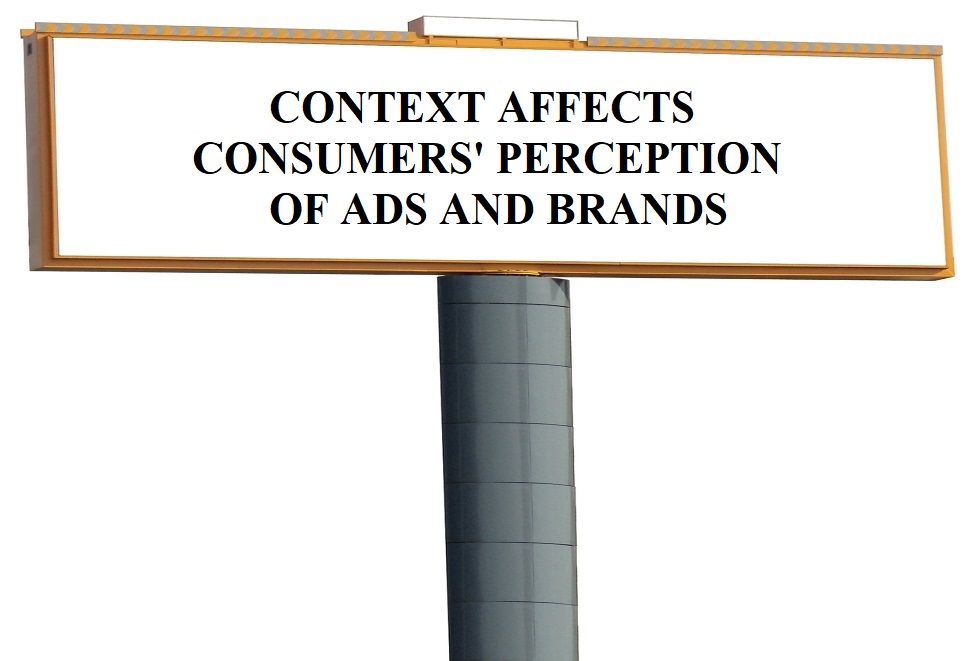Understanding the Effects of Context and Sentiment on Consumers’ Perception of Ads and Brands | 15 Nov, 2021

The digital advertising landscape is increasingly shifting towards contextual relevance. Brands are using contextual advertising approach for connecting with the right consumers with the right message and at the right time.
A recent survey study has shown that the quality of the environment in which a brand’s ads are placed influences consumers’ perception of the ads and the brand. The online survey, which involved more than a thousand participants, aimed to find out the kinds of ads that people prefer to see in different types of environments, and how context and sentiment of the content of a webpage affect people’s feelings towards the ads placed on that page and the associated brands.
The results of the survey are highly favorable to contextual targeting companies. Seventy percent of the survey participants stated that it is important, at least to some degree, that digital ads placed on a page are relevant to the page’s content. This means people value seeing ads that are in line with the content they are consuming.
Seventy-four percent of the survey participants, i.e., about three in four participants, stated that they like to see those ads on a web page that match with the content of the page. This finding reveals the preference of consumers for contextually relevant ads.
Seventy-two percent of the participants said that the content surrounding a digital ad impacts their perception of the ad. This finding reveals that people not only just give preference to the ads that are contextually relevant to the surrounding content, but also perceive them in a better way. The content of a web page influences the opinion of people about the ads on that page.
When participants were shown content from different content categories such as entertainment, finance, shopping, etc., their ad preference was found to be consistent, i.e. for each of the different content types, they always preferred to see ads contextually relevant to that content type. Thus, by leveraging the expertise of contextual advertising companies, brands can achieve unprecedented reach and engagement.
Fifty-six percent of the participants stated that they form a more favorable opinion towards a brand whose ads are contextually relevant. Sixty percent said that they are likely to remember ads that align well with the content of the page.
A piece of content can communicate a positive, neutral, or negative feeling to the people consuming it. Majority of the participants, i.e. seventy-two percent, said that the sentiment of the content they consume influences their feelings towards the brands whose ads are shown against that content.
The survey study found that, on average, participants were more receptive to content that conveyed positive or neutral feelings. Participants also showed increased favorability towards the brands whose ads appeared against content with positive or neutral sentiment. Moreover, participants showed increased memorability for ads placed against content with positive or neutral sentiment.
By understanding how context and sentiment affect consumers’ perception of ads and brands, marketers can boost consumers’ engagement with ads and brands.

BLOGS
Super Bowl Advertising: A Month-Long, Multi-Screen Event for Brands
For Americans, there are two events that they hyped for a whole year - Football season, and waiting for football season. Football remains highly popular among Americans, with searches for "NFL Draft" and viewership numbers showing an unwavering interest in the sport. According to Google Search data, football is more ...

BLOGS
Advertising in the Age of Climate Change: The Adoption of Carbon Emission Metrics
The urgency of the climate crisis is increasing, and the media industry is no exception. While some professionals are working to reduce their direct operational emissions, there is an urgent need for common standards to be set for indirect emissions that come from digital advertising. The digital advertising industry is becoming ...

BLOGS
Complete Guide to Reaching Audience with Cookieless Advertising
What’s your alternative game plan for effective cookieless advertising? Haven't thought about it yet? The time is now! Introduction The complete year of 2022 was dedicated to cookies! Panic is setting in amongst marketers owing to mounting privacy laws and the ban on cookies, causing them to re-evaluate their strategies.







